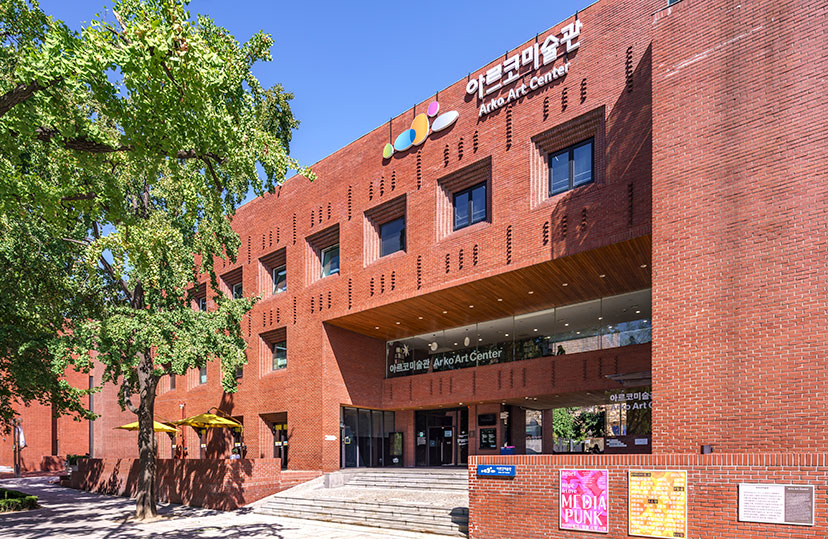소개

비전 및 운영방향
한국문화예술위원회가 운영하는 아르코미술관은 ‘문화예술과 국민을 잇고, 문화예술의 내일을 함께하는 아르코’라는 위원회의 비전하에, 사회적 전환기의 예술 환경 변화에 대응하는 시각예술의 가치 발굴과 공유를 위하여 연구, 창작, 전시, 교류 활동이 선순환하는 플랫폼 기능을 수행합니다.
또한, 「유용·포용」의 가치와 「협업·공유」의 방법을 「미술관 활용성 및 사회적 역할 확대(+)」, 「혐오·차별 없는 포용적 환경 조성 및 지속가능한 미술관을 위한 실천(-)」, 「학제간 협업 통한 미술관 담론 생성(×)」, 「다양한 예술 주체 간의 지식과 자원의 공유 및 소통(÷)」의 4대 운영 전략으로 구체화하고 다양한 프로그램을 통해 실천합니다.

Our Vision and Mission
ARKO Art Center, affiliated with Arts Council Korea (ARKO), upholds its vision to be a ‘Connecting Culture and Arts with People, Together for the Future of Culture and Arts - ARKO.’ To develop and share the value of visual art responsive to the cultural environment in the time of social transformation, we serve as a platform where a virtuous circle of research, production, exhibitions, and cultural exchanges its created.
We foster our values, which are to be ‘useful’ and ‘inclusive,’ by ‘collaborating’ and ‘sharing.’ This goal is specified in our four mission statements: 1. Expand the museum’s role in society by increasing accessibility (+), 2. Create an inclusive environment free of discrimination and hatred and implement ecofriendly practices (-), 3. Generate museum discourses by promoting multidisciplinary practices (×), 4. Share and communicate knowledge and resources by bridging diverse players of the art world (÷). We strive to accomplish our missions with a variety of programs every year.



